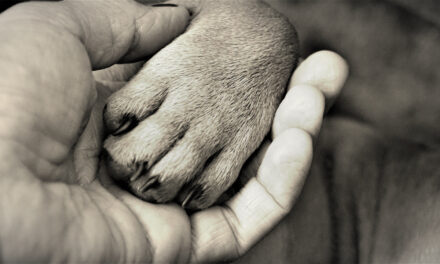Gearing up for my night shift in the COVID-19 intensive-care unit, I don my personal protective equipment (PPE)–a white plastic air-purifying respirator (PAPR) hood. The hood connects via a tube to a large battery pack that I strap onto my waist over my scrubs. I turn on the battery and shiver when the rush of cool air blows past my ears. I walk into a bright white antechamber where a safety officer inspects me.
“You’re good to go,” she says. “Stay safe.”
I take a deep breath, push the door open and walk in. This floor, formerly dedicated to general internal medicine, has been converted into a COVID-19 ICU. Masked, gowned and gloved people go about their tasks, but it is eerily quiet; the PAPRs’ gentle hum drowns out other sounds. Gone are the visitors and the staff that used to pass through. The nurses, who would congregate when things were slow, keep to themselves. There’s none of the usual laughter.
In the rooms, patients suffering different stages of the disease fight for their lives. Those on ventilators are sedated and motionless. Those not on ventilators are restless; even the tiniest movement makes them short of breath, and their anxiety is palpable. They fear that any minute they’ll stop breathing, or that their oxygen levels will drop so low that they’ll need to be put on a ventilator, like the others. The lungs are always the primary issue, but the complications can spiral off in many directions: heart failure, kidney failure, liver injury, blood clots, additional infections.
What strikes me most is how lonely they all look, with only tubes, wires and beeping machines to keep them company. I can’t help but think how cruel it is that they don’t have their people with them during these most critical moments of their lives. I realize that I’m holding my breath. I let it out, calming my nerves.
“Andi!”
I look up and am relieved to see one of my favorite nurses. Her face is obscured by an N95 mask and face shield, but her voice is unmistakable.
“It’s nice to finally see a familiar face,” she says, beaming beneath her mask. Doctors and nurses from all specialties are working here; tonight, she’s the only one I know. Everyone else is a stranger.
“How are you doing with all this?” I ask. She wasn’t an ICU nurse, but she’s learning to be one. She gives me a knowing look.
“Yeah, well, thank you,” I say. “I know a lot has been asked of you.”
She rolls her eyes, but smiles.
I round on my patients. Before seeing each one, I put on a new gown and two sets of gloves and sanitize my hands. As I do this, my apprehension builds; then it melts away as I walk into the room. I forget that the patients have this godforsaken virus, that it could make me sick, that we’re separated by layers of PPE. I do what I’ve always done. I look at all the machines and talk to the patients, intubated or not. I lean in conspiratorially, as if we’re old friends, asking how they’re doing, answering questions. I examine them. I hold their hands. When I’m finishing up, I squeeze the person’s hand and say goodbye before leaving.
In each room, I perform a task, forgetting that I’m in the eye of the storm. The quiet on the floor belies the frenzy in the world outside. One patient was just extubated, but his voice is shot after three weeks of intubation, and he can’t hear me through the PPE. We take turns writing on a small whiteboard.
How are you doing? I write.
Okay. How are you doing?
We make small talk for a few minutes.
I have to go now. I’ll see you later, I write eventually.
See you later, doc. I put away the whiteboard, wave to him, step outside and walk into Mr. Porter’s room.
Mr. Porter is an elderly gentleman who barely avoided intubation. Sadly, although he’s breathing more comfortably, he has developed many complications, and his family has transitioned him to comfort care, knowing that he wouldn’t want interventions. He was too far gone mentally to make the decision himself and likely has only days to live.
Tonight it’s my job to set up a Zoom call so that he can see his family. I pick up the iPad in his room and realize that his loved ones have made him a video.
“Look at this, Mr. Porter,” I say and hit Play.
We watch together as a series of clips flash across the screen. Countless family and friends tell him how much they love him and wish him well, and although Mr. Porter is delirious, he occasionally shouts out their names. I watch his lifelong legacy unfold in front of our eyes–children, grandchildren, great-grandchildren–carrying many lifetimes’ worth of memories. Silently, I cry into my PAPR hood, unable to touch my face or wipe away the tears.
“Isn’t that nice?” I ask.
“Yeah,” he says.
With the video complete, I set up Zoom and meet his family. They’re excited to see him, laughing and smiling and taking turns speaking or singing to him.
“We love you, Pop-Pop,” they repeat over and over.
His daughter leads us through a prayer. She asks God to watch over her father, and my mind starts to drift.
Sometimes patients ask me if I am religious.
“No,” I say truthfully.
“Well, do you believe in God?” they ask, incredulous.
“I don’t know,” I say.
I recently rediscovered the song “I Would Like to Call It Beauty” by Corinne Bailey Rae. It is an aching song about finding beauty in grief. Bailey Rae wrote it after her husband died from an alcohol and methadone overdose; she was inspired by a conversation about God that she’d had with her brother-in-law. He’d said that he believed in “a force that binds everything, holds everything,” adding, “I would like to call it…beauty.”
In this moment, as Mr. Porter’s daughter prays, I realize that although I’m not sure I believe in God, I, too, believe in beauty. The beauty of a life lived, the beauty of the love and kindness that sustains us all and gives us hope.
Amid the darkness and tragedy, I see beauty every day in the COVID-19 ICU. There is beauty in the way we talk to our patients as if they were our confidants and hold their hands when their loved ones aren’t there to do so, attempting to restore some of the humanity that this disease has stolen from them. There is beauty in the way that we all–doctors, nurses and therapists from every specialty–step out of our comfort zones to join forces, our hands and minds uniting in pursuit of one common goal: doing right by our patients and taking care of them in this critical moment. There is beauty in the way that patients and their families make the most of fleeting moments together to reminisce about good memories and express their tender love.
I would like to call this beauty.
The prayer finished, Mr. Porter’s daughter stops talking and rests her head on her hand, her eyes taking in every detail of her father’s face. Other family members say goodbye and sign off, but she remains.
I say good night, prop up the iPad so that she can continue to watch him, and walk out of his room.






